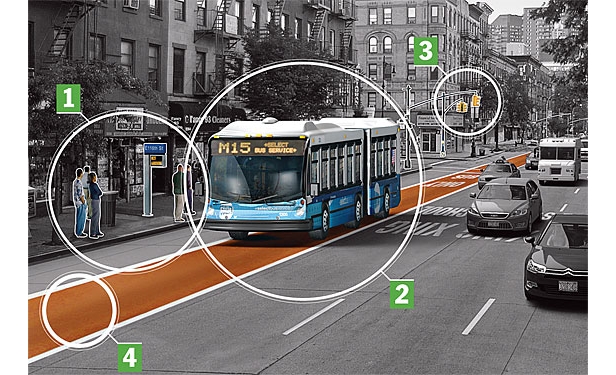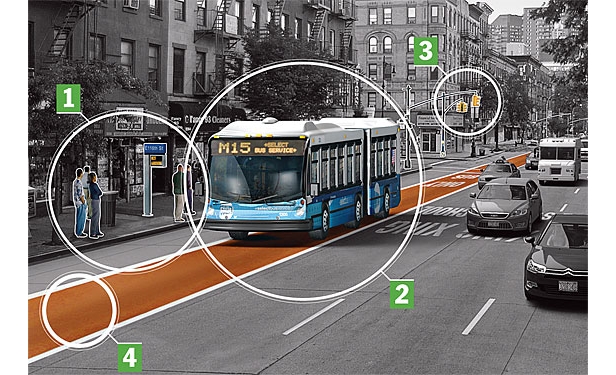We’re starting to see some tangible progress from President Obama’s Smart Growth/Livability initiative — a joint venture of the Department of Transportation, Department of Housing and Urban Development, and the Environmental Protection Agency — which announced $293 million in grants for urban transit yesterday.
Much of the total goes to bus rapid transit systems, which are designed to be more … rapid. Sleek. Convenient. (See below.) Projects aiming for those qualities include two new corridors in Chicago (receiving $36 million), New York City’s 34th Street Transitway ($18 million), and a new line in San Joaquin, Calif. ($5 million). (Streetcars and bike-focused projects got some federal love too, as The City Fix notes.)
Buses are the boiled potatoes of the transit world, with none of the techno-futuristic appeal of high-speed rail or even underground rail. But a host of tweaks are changing that, as Robert Sullivan describes in New York Magazine:
Over the last decade, in a few transit-enlightened cities around the world, the bus has received a dramatic makeover. It has been reengineered to load passengers more quickly. It has become much more energy-efficient. And, most important, the bus system — the network of bus lines and its relationship to the city street — has been rethought. Buses that used to share the street with cars and trucks are now driving in lanes reserved exclusively for buses and are speeding through cities like trains in the street. They are becoming more like subways.
Below are some of the tweaks planned for a new Manhattan line. They’re all somewhat minor, but they’re the oft-overlooked sort of incremental innovation that accumulates into something bigger:
 Courtesy of the MTA and Dot; Illustration by Joe Zeff Design
Courtesy of the MTA and Dot; Illustration by Joe Zeff Design
1. Pay on the street
More than a third of all bus delays can be attributed to the time it takes passengers to board. Here they will swipe their MetroCards at street kiosks before the bus arrives.
2. Enter at the back
A new fleet of buses improve boarding time by being lower to the ground — and allowing rear-door entrance.
3. Hold the light green
Soon after Select Bus Service launches, buses will be equipped with “signal prioritization” technology that tells upcoming traffic lights to delay turning red.
4. Own the lane
A painted lane will be reserved for buses, and cameras will photograph stray cars and trucks. But some activists — and politicians — criticize the program for not including physically separated lanes.
As more and more cities get serious about cutting their fossil-fuel dependence, this stuff is a lot easier than building new subways. And a lot less soul sucking than building new Subways.



